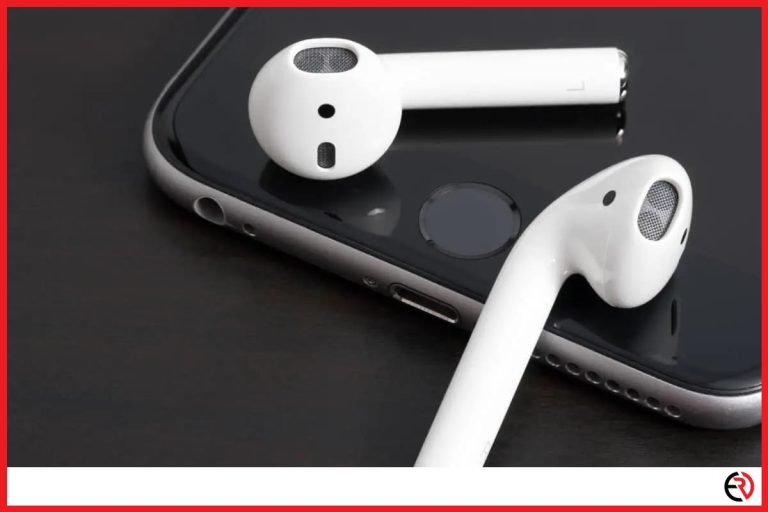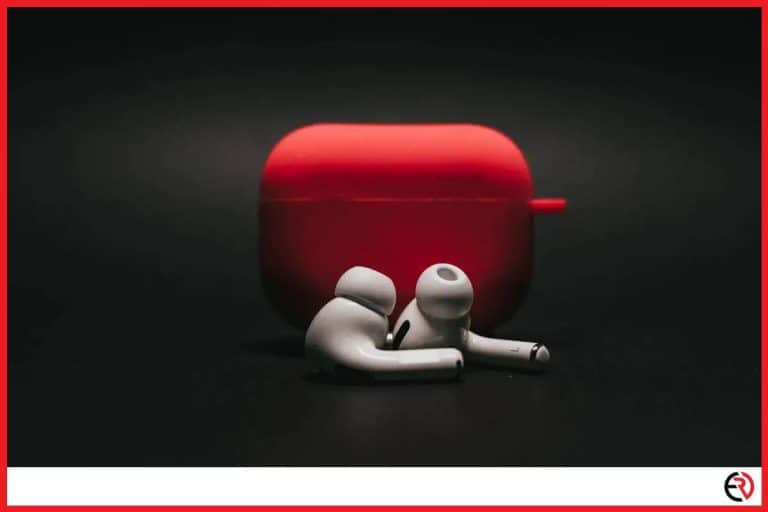Why do Musicians Wear Earpieces During Concerts?
This post may contain affiliate links which means that, if you choose to make a purchase, I may earn a small commission at no extra cost to you.
If you have ever been to a live concert or watched your favorite musicians perform live on TV, you may have noticed them all wearing earpieces. Let’s find out why musicians wear earpieces during live shows.
It is crucial to hear what you are playing or singing when you are performing live on stage.
Why do Musicians Wear Earpieces During Concerts? Musicians wear in-ear monitors (IEMs) to hear themselves and other musicians on stage better and monitor their performance. It also allows them to listen to a backing track and click track that the audience does not hear.
What do the artists hear in their earpiece?
Musicians who wear in-ear monitors primarily listen to their own performance. Thus, a singer will listen to the songs they are singing while an instrumentalist will hear the instruments they are playing. Plus, they can also choose to hear the performances of other instrumentalists and singers on stage. Doing this helps artists to perform in harmony and solve issues with synchronization.
Aside from that, artists can also choose to hear a backing track and click track.
Backing tracks are recordings of synthesized instruments that are often recorded in a studio. These allow bands and solo performers to add sections to their music that are either impractical or impossible to perform in a live setting. Examples include choir parts, string sections, horn section, backing vocals, and drumming.
A click track is a series of beats or audio cues that act as a metronome. Listening to a click track helps performers to maintain a smooth tempo and improve synchronization with other performers. The audience is unaware of a click track as they cannot hear it.
What do in-ear Monitors do?
In-ear monitors act as a monitoring system that allows musicians to listen to a mix of audio from different sources while performing live on stage. Traditionally, singers used wedge-shaped loudspeakers (wedges) or floor monitor speakers as a monitoring system. Wedges are placed in a way that faces the performers so that the musicians can hear themselves better while minimizing what the audience hears.
Nowadays, artists prefer to use in-ear monitors instead of wedges as IEMs offer several advantages over floor monitoring systems. We will look at them in detail below.
How do in-ear Monitors work?
An in-ear monitoring system consists of three parts: A rack-mounted transmitter, a bodypack receiver, and a set of earphones. The transmitter receives the audio feed from the mixer and then transmits the audio signal wirelessly to the wireless receiver which is usually worn by the singer on a belt. The singers listen to the audio feed by wearing the IEMs and plugging the jack into the bodypack receiver.
In-ear monitoring systems can work in three operational modes. These are described below:
1. Stereo mode – In this mode, the audio engineer creates a stereo mix and feeds the left and right signals to the transmitter. Then, the transmitter transmits the signal to your bodypack and you can listen to it through your earpieces.
2. Mono mode – In this mode, you won’t notice any difference between the left and right earpieces. Both the signals will be identical.
3. Mix mode – In this mode, the mixer mixes two different types of inputs and feeds two different types of audio signals to the transmitter. For eg. input 1 could be the lead singer and input 2 could be the generic band mix. The singer would have to listen to the final signal in mono but it will offer additional control to the singer.
Typically, mix mode allows the singer to control the mix to a certain level and the volume level as well. They can even control the relative level of loudness between the two feeds with the balanced button.
What are the advantages and disadvantages of using in-ear Monitors?
Setting up an in-ear monitoring system may seem complicated at first but the degree of control it allows each member of the band is worth the effort. There are also several advantages of using an IEM system instead of wedges. Some of these are listed below:
1. Better sound quality – Modern in-ear monitors offer stunning sound quality. These are designed to create a seal inside your ears that block outside noise and can reduce sound levels by up to 30 decibels or even more. Thus, you can hear music in crystal clear quality without any unnecessary noise.
Stage monitoring systems (wedges) can interfere with the rest of the sound system (loudspeakers) present on the stage. Common problems include feedback and phase issues which can create acoustic problems and negatively impact the performance of the band. Using IEM systems helps to solve such live audio problems.
2. Hearing protection – Stage monitoring systems often have to be cranked up to the loudest levels so that the artists can hear their performance over the crowd. The loud stage-volume can cause ear fatigue and even cause ear damage or hearing problems in the long-term.
In-ear monitors eliminate the need to use wedges and reduce the stage-volume by a lot. Also, due to their noise-cancelling feature, you can listen to clear and distortion-free music at a comfortable level. As a result, it relieves the strain on the ears and helps to preserve hearing.
3. Increased mobility – Stage monitors can take up a lot of space on the stage and clutter it due to the presence of wires. Also, you have to maintain a certain distance and direction from it to hear them properly. This limits the mobility of the singers by a lot.
Most singers use wireless in-ear monitors which increases their mobility by a lot. Plus, they can move around the stage freely as they can access more areas on the stage. Also, it is easier to pack and move around with IEMs instead of carrying wedges.
IEM systems allow musicians greater flexibility to perform but they may also introduce a few drawbacks. A few of these are listed below:
1. Disconnection from the audience – The noise isolation feature of IEMs can make the musician feel a disconnect from the audience as they cannot hear them with the earpieces on. Without proper feedback from the fans, the artists may not be able to feel the vibe which is essential to perform well on stage.
2. Interference – Wireless IEM systems use radio waves to transmit sound signals. This may introduce some interference issues which can decline the sound quality or cause audio dropouts.
3. Easy to lose – If the IEMs are not custom-made to fit your ears, they may slip frequently. Also, it can be hard to find them sometimes due to their small size on a dark stage.
What do in-ear Monitors sound like?
Putting on a pair of in-ear monitors can feel like you are listening to music in an isolated room. This is due to the fact that IEMs are great at isolating outside noises. The quality of the sound itself will depend on a lot of factors such as the quality of the product, how many drivers it contains, the brand, etc Cheap IEMs may contain only 1 driver whereas expensive models may contain 7-8 balanced armature drivers.
Why do Singers sometimes take the earpiece out?
Popular singers like Beyoncé and Demi Lovato have been known to pull out their earpieces on some occasions.
In-ear monitors allow singers to check how they are performing and adjust their tune and rhythm accordingly. Thus, it can be detrimental to their performance if they remove their IEM mind-singing. So, why do they do this?
There can be three main reasons why a singer may choose to take out their earpiece while performing on stage. These are listed below:
1. The equipment is malfunctioning – Sometimes, the IEMs may not work properly. The IEMs may not be custom-fit and slip out frequently or they might be improperly tuned. It can also happen that one of the earpieces stops working or functioning properly. All of these can be extremely irritating. So, it makes more sense to remove the earpiece.
2. Improper mix – The singer may not like the sound-mix they are hearing. Although it is possible to adjust different aspects of the mix using modern IEMs, it might still not be pleasing to hear. Thus, the only option is to remove the earpiece as it is impossible to signal the sound engineer to adjust the mix while singing.
3. They want to hear their fans – Wearing IEMs isolates you from all the noise in your environment. While it is extremely helpful in some cases, it can also disconnect you from the audience as you cannot listen to their clapping and cheering of fans. Placing microphones facing the audience can help to introduce some of the ambient noise from the crowd back into the mix.
However, taking out an earpiece feels much better and can help artists to engage and excite their fans better. Plus, being able to stay in tune and sing without the help of IEMs is the mark of a very talented performer.
Do musicians use the same kind of earpieces while recording in the studio?
Traditionally, high-quality studio headphones were used by recording artists to record music. In fact, it is still the case for the majority of the recording artists. However, in-ear monitors have improved a lot in recent years and the best ones can match the sound quality of studio headphones. Ultimately, it boils down to the preference of the recording artist.
Artists who are used to performing live feel comfortable using IEMs while recording in the studio too. However, many musicians prefer to use headphones that produce better sound quality and are more comfortable to wear than normal IEMs.







